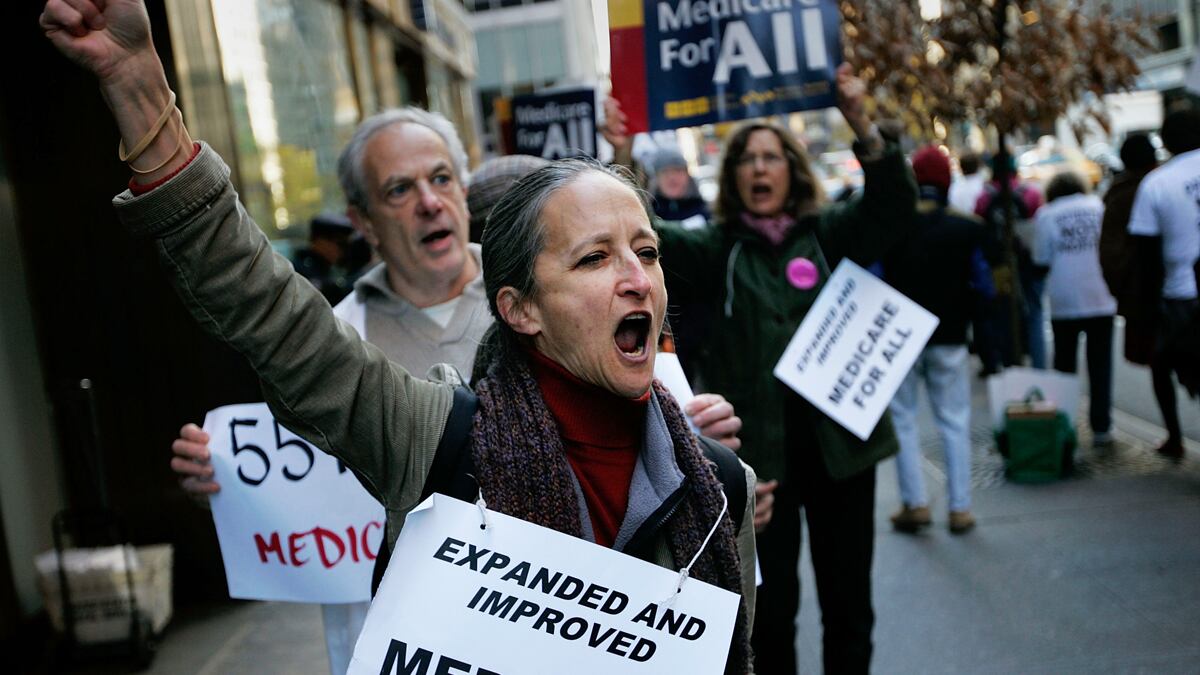America as we know it will end unless we end Medicare as we know it. That is “only a slight exaggeration” writes Robert Samuelson in the current issue of Newsweek. Despite the Democrats’ success scaring seniors in the recent special election in New York’s 26th congressional district, Republicans should not run from reform. But, they need better messaging. Here's a cut at it.
The patient is hemorrhaging, and you are charged with determining care. Do you:
a. Do nothing; let the patient bleed out?b. Transfuse blood from another critical patient?c. Convene 15 bureaucrats to determine if any treatment is within budget?d. Immediately slow the flow and treat the internal cause to stop the bleeding? Then, empower the informed patient to choose the type of ongoing care?
ADVERTISEMENT
The patient is Medicare. And Medicare is hemorrhaging money. According to the program’s trustees, the hospital insurance trust fund will be “exhausted in 2024,” five years earlier than estimated just last year. The trustees also warn that “the actual future costs (PDF) for Medicare are likely to exceed those shown by the current-law projections.”
First enacted in 1965 (when health-care costs were 50 times lower) to cover acute care only, and funded primarily by payroll taxes, Medicare provides health-insurance coverage today to about 48 million elderly and disabled Americans. And that number is growing by 10,000 boomers a month.
Let’s walk back through the four triage decisions above:
To do nothing will “end Medicare as we know it.” The program is already the third-largest line item in the federal budget, and its costs will soar to $900 billion or more by 2020. The program is running out of money as fewer will be paying in than receiving benefits (there are now more Americans over 45 than under, for the first time in the nation’s history), and as health-care costs continue to increase (already doubled in the last nine years). Congress currently does not have the authority to use general revenue to cover the shortfall.

There is no money to transfuse into Medicare. Washington is already borrowing 40 cents of every dollar it spends (and it spends 68 cents of every tax dollar on health and retirement programs, and interest on the debt). The debt ceiling has been hit, and Social Security and Medicaid are also on the critical-care list. Medicare solvency would require an immediate 21 percent tax increase, or an immediate 17 percent cut in benefits.
Along with cutting more than $500 billion from Medicare, “Obamacare” appoints a panel of 15 unelected, unaccountable bureaucrats to decide how much doctors will be paid and for which services. Recommendations from the panel automatically become law, and can only be overridden by a two-thirds majority vote in Congress. Rate increases will be capped, perversely driving health-care costs up. With current Medicare reimbursement rates already below market rates, doctors and hospitals will be forced to charge their non-Medicare patients even more. Medicare itself projects the president’s proposed cuts will cause 15 percent of U.S. hospitals, skilled-nursing facilities, and home-health agencies to become unprofitable (PDF) in the next decade, reaching roughly 25 percent in 2030 and 40 percent by 2050. To survive, more doctors will refuse to accept new Medicare patients, further decreasing access to quality care for seniors, creating waiting lists and rationing by consequence if not intent.
Rep. Paul Ryan’s plan (PDF) prescribes patient power rather than bureaucratic bungling to slow the increase in Medicare spending, and treats the underlying disease (an open-ended fee-for-service structure that rewards the quantity of tests, not the quality of care).
Here are the basics of Ryan’s reforms for Medicare already approved by the House:
• No changes for those 55 years or older.• No cuts in current spending.• Starting in 2022, new Medicare beneficiaries choose from the same kind of system Congress enjoys today.• Starting in 2022, the age of eligibility would increase by two months per year until it reached 67 in 2033.• Once eligible, you get to choose the lowest-cost, highest-value plan you want from a list of guaranteed private insurance plans provided through Medicare.• Every plan must provide—at a minimum—the same standard value of benefits that members of Congress and other federal employees receive.• You cannot be denied coverage.• You cannot be dropped for a pre-existing condition.• You may change plans annually during the open enrollment period.• Medicare will pay the premium directly to the insurer.• Medicare will pay all or part of your health-insurance premium based on the plan you choose.• The average premium support for a 65-year-old in 2022 is $8,000, the same as under traditional Medicare.• Lower-income seniors and those with greater health-care risks will receive more premium support.• Wealthy seniors will receive less premium support.• Insurers that choose to participate in Medicare must agree to offer insurance to all beneficiaries, to ensure that all beneficiaries, especially the sickest and highest-cost, receive coverage.• By giving individuals more choices, health-care providers will be forced to compete against each other on price and quality—and it is this process that attacks the root drivers of health inflation.
The question Ryan ultimately poses: Who should be making health-care decisions for you and your family? A panel of officials in Washington? Or you?
And according to Ryan, the Congressional Budget Office scoring of his proposal, which the Democrats say proves seniors will pay more for benefits, does not account for the $7,800 in added support for lower-income seniors, and it uses as its baseline “a mythical future, a fiscal fantasy... a collapsing system.”
Ryan’s plan may not be perfect, but simple math shows reform is needed to stop the bleeding. Even President Bill Clinton agrees—in public, and in private. Clinton may recognize Ryan’s premium-support plan; it’s based in part on recommendations from Clinton’s own bipartisan commission to save Medicare.
The Democrats in the House and Senate have not offered a reform plan, choosing instead to attack the Ryan plan with hysterical charges. “Mediscare” tactics, like rolling Granny off a cliff, may make for good political theater, but it’s a lousy way to lead a nation that’s hemorrhaging debt.
Republicans are right to take a stand to keep the country from going over the cliff. But they need to ask the public to stand with them in defense of our moral obligation to protect this and future generations of grannies. Whether it’s a Ryan-run boot camp, or GOP triage training (PDF), Karl Rove is right: “There needs to be preparation and self-education, followed by extensive town halls, outreach meetings, visits to senior citizen centers, and the use of every available communications tool to get the reform message across.”
Those who fight reform to save careers over country are mistaken. The Hippocratic Oath says do no harm. It’s the Hypocritical Oath that says do no harm to one’s political future.






